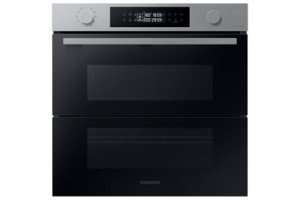The Comprehensive Guide to Built-In Cookers and Hobs
Built-in cookers and hobs have actually become increasingly popular in modern kitchen areas, providing both performance and aesthetic appeal. These integrated appliances, designed to fit seamlessly into kitchen cabinets, optimize area while improving the cooking experience. This post will check out the various kinds of built-in cookers and hobs, their benefits, maintenance ideas, and regularly asked concerns.
Comprehending Built-In Cookers and Hobs
Built-in cookers typically consist of ovens, while hobs describe the cooking surface that can incorporate numerous heating elements such as burner, electric coils, or induction zones. When combined, these 2 appliances create an effective and streamlined cooking setup.
Types of Built-In Cookers and Hobs
When choosing a built-in cooker and hob, it's vital to comprehend the various types available. Here's a detailed table comparing the primary types:
| Type | Description | Pros | Cons |
|---|---|---|---|
| Gas Hob | Utilizes gas as a fuel source. | Quick heat change, cooking control. | Needs gas line installation. |
| Electric Hob | Utilizes electric coils or strong plate heating. | Typically less costly, simple to clean. | Slower to heat and cool down. |
| Induction Hob | Utilizes electromagnetic energy for cooking. | Quick heating, energy-efficient, safe. | Pricey, requires compatible cookware. |
| Built-In Oven | Can be electric, gas, or mix. | Flexible cooking options, numerous sizes. | Repaired location, prospective installation complexity. |
Benefits of Built-In Cookers and Hobs
- Space-Saving Design: Built-in units conserve space by incorporating flawlessly into the kitchen layout, leaving more room for storage and counter tops.
- Aesthetic Appeal: They provide a streamlined and modern appearance, raising the style of any kitchen.
- Customization: With numerous styles and setups, house owners can pick appliances that best fit their cooking habits and kitchen dimensions.
- Boosted Functionality: Built-in cookers often feature innovative features such as self-cleaning choices, several cooking modes, and programmable timers.
- Security Features: Modern hobs integrate features like automated shut-off and child locks, improving safety in the kitchen.
Upkeep Tips for Built-In Cookers and Hobs
To make sure the longevity and ideal performance of built-in cookers and hobs, proper upkeep is important. Below are necessary maintenance tips:
- Regular Cleaning: Wipe spills and spots instantly to prevent them from hardening or becoming more difficult to clean up.
- Use Appropriate Cleaning Supplies: Avoid abrasive materials that can scratch surface areas. Use cleaner specifically designed for the type of home appliance you have.
- Examine Gas and Electrical Connections: Regular inspections can prevent leakages and guarantee optimum performance.
- Adjust Temperature Settings: If you observe disparities in cooking temperatures, think about recalibrating the oven.
- Set Up Professional Servicing: Annual check-ups can assist recognize and remedy minor problems before they escalate.
Picking the Right Built-In Cooker and Hob
When selecting a built-in cooker and hob, several elements need to be thought about:
1. Cooking Preferences:
- If you delight in quick temperature level modifications, a gas hob may be perfect.
- For energy performance and uniform cooking, induction hobs are preferred.
2. Kitchen Size:
- Consider the area offered for installation. Step cabinets and other appliances to ensure the chosen system fits conveniently.
3. Design and Design:
- Opt for designs that complement your kitchen's décor. Read A lot more -in systems can be found in various finishes, such as stainless-steel, black, or customized cabinets.
4. Budget plan:
- Establish a budget that elements in purchase expenses, setup costs, and long-lasting business expenses.
5. Brand Reputation:
- Research trustworthy brand names known for reliability and client service. Reading evaluations and seeking recommendations can also be valuable.
Often Asked Questions (FAQs)
Q1: Are built-in cookers and hobs more costly than conventional units?A1: Generally, built-in cookers and hobs can be more pricey upfront due to installation and style. Nevertheless, they might provide long-term savings through energy performance.
Q2: Can I set up a built-in cooker or hob myself?A2: While some may be set up by property owners, it is often suggested to employ an expert, especially for gas or complex electrical connections, to make sure security and compliance with local codes.
Q3: What is the average life-span of built-in cookers and hobs?A3: With appropriate care, built-in cookers and hobs can last anywhere from 10 to 15 years. Routine maintenance can extend their life.
Q4: Is it possible to integrate various types of hobs with the exact same oven?A4: Yes, lots of kitchen areas include a combination of hobs (e.g., gas and induction) along with a built-in oven, permitting flexible cooking options.
Q5: How do I know if my hob is energy-efficient?A5: Look for energy performance scores and think about induction hobs, which typically offer remarkable energy performance compared to gas or conventional electric hobs.
Built-in cookers and hobs provide a blend of contemporary style and advanced cooking technology, enhancing any kitchen's functionality and style. By comprehending the various types offered, their benefits, and maintenance needs, property owners can make educated choices when purchasing these important kitchen appliances. With correct selection and care, built-in cookers and hobs can supply years of satisfying cooking and a smooth kitchen experience.

